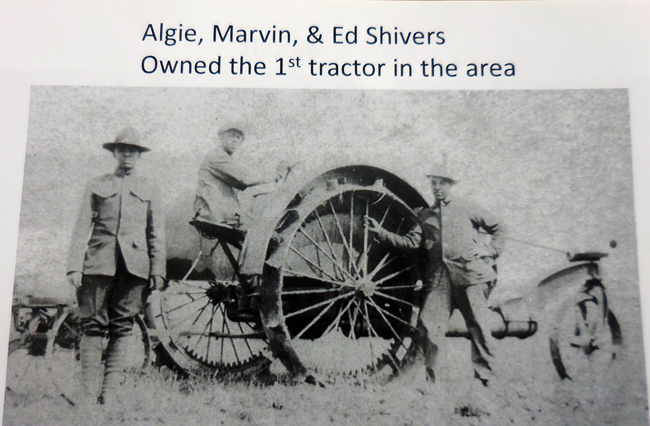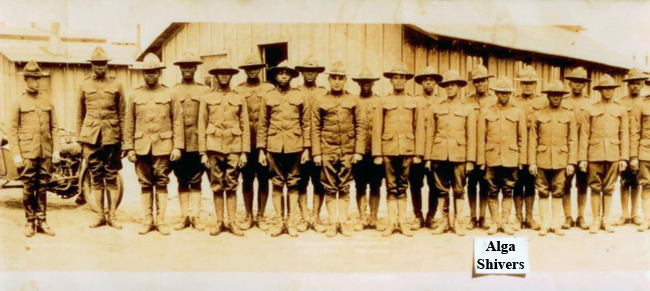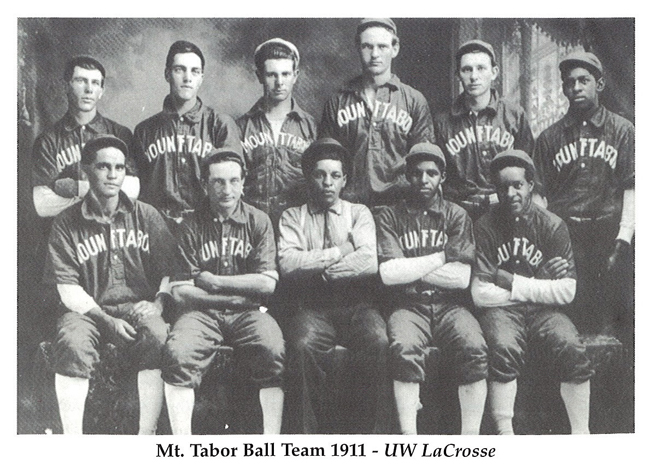Local History Topics
Cheyenne Valley
Museum Notes
by Kristen Parrott, curator
for the week of February 22, 2017
The 100-year anniversary of the U.S. entering World War I has come and gone. Congress declared war on Germany on April 6, 1917. Parts of Europe had already been at war for nearly three years when the U.S. entered the conflict.
Some people volunteered for military service right away, but not nearly enough for the size of the conflict, so a draft was organized. By the end of the war, more than half of those serving in the military were draftees. The first draft was held on June 5, 1917, two months after the declaration of war. All men in the United States aged 21 to 31 were registered for this draft, totaling nearly 10 million people. (The majority of these 10 million who were called up were not certified for service but instead were exempted, rejected, or discharged.)
One of Vernon County’s WWI soldiers was Alga Shivers. Alga, born in 1889, lived in Cheyenne Valley, near the village of Dilly, Town of Forest. The book Vernon County War History, published in 1926, tells us that Alga entered service on October 27, 1917, in Viroqua.

The U.S. military was segregated at that time. The 92nd and 93rd Divisions were composed entirely of African-American enlisted men from all around the country. Most of their officers were white. The 92nd was organized from the first group of African-American draftees who entered service in late October of 1917. Alga Shivers became a private in the 365th Infantry Regiment, which was part of the 92nd Division. Members of the 92nd were sometimes called “Buffalo Soldiers,” a name originally used for all-Black cavalry regiments formed after the Civil War.

Alga was sent to Camp Grant in Rockford, Illinois, to train. He went with the 92nd Division to France in June of 1918. Most African-American soldiers were assigned to support services and labor rather than combat. Shivers family stories relate that Alga worked as a driver in France, driving officers around in a motorcycle sidecar. The war ended in November, 1918, and the 92nd returned to the U.S. in February, 1919. Alga was discharged in March.
What did Alga Shivers think about being in an all-Black regiment, coming as he did from an integrated community? He grew up attending an integrated school and church and playing on an integrated baseball team. Soldiers in the 92nd faced discrimination on a regular basis, and Alga’s wartime experiences possibly introduced him to a level of racism he had not suffered before. After the war he chose to return to his home in Vernon County, where he remained to the end of his days. Alga died on November 27, 1978. Today he is remembered as the builder of many of the round barns that our area is famous for.

If you would like to learn more about our county’s part in World War I, copies of Vernon County War History are available at the museum for use in the research room and for sale. The American Negro in the World War, written by Emmett Scott in 1919, is available free online at archive.org and other sites.

 MENU
MENU